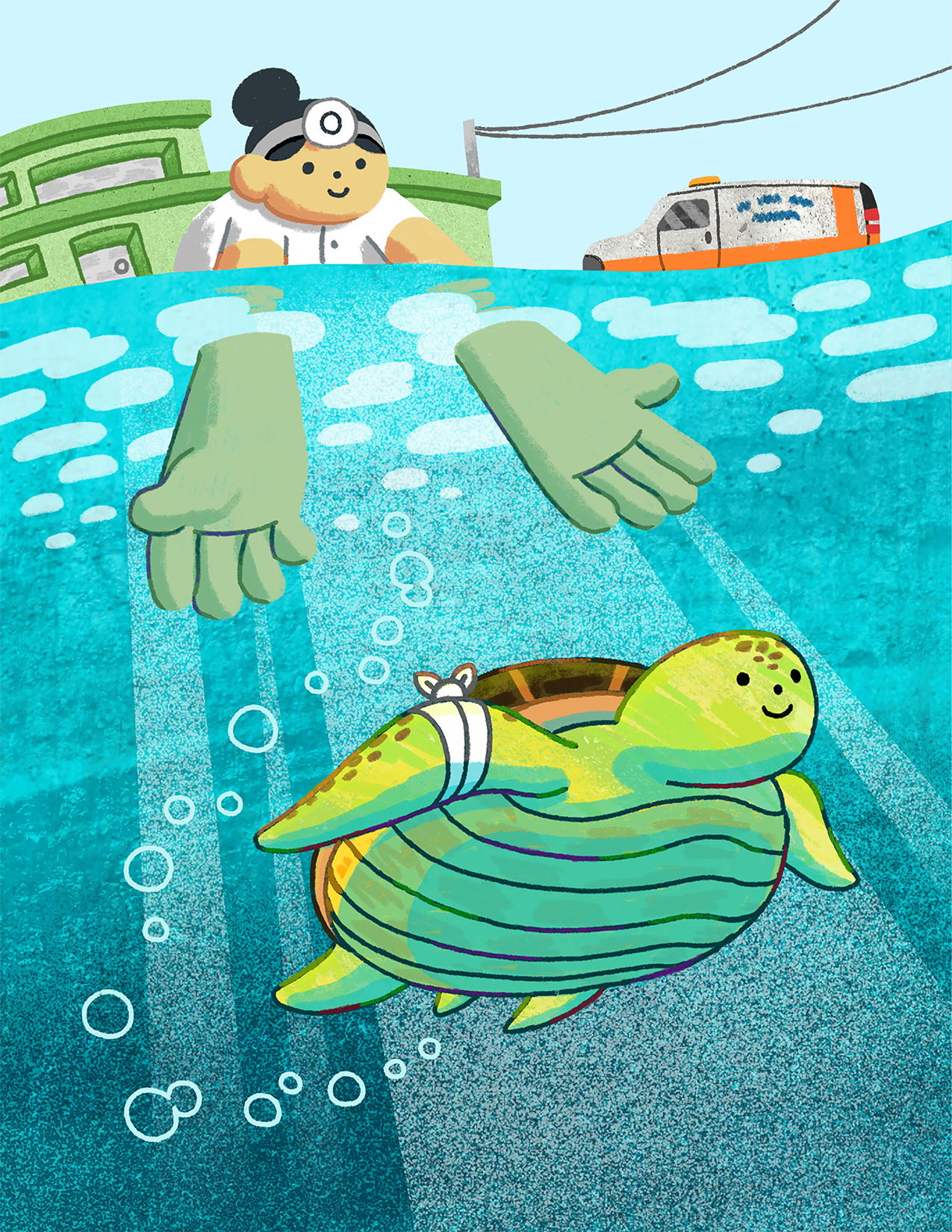Aquamarine: Saving Marine Turtles in the Turquoise Tropics
A unique motel located in Marathon, Florida called The Turtle Hospital houses, treats, and releases sea turtles that have been injured, while providing educational tours along the way.
Written by Alyssa Mattei
Illusrated by Austin MacDonald
If there was no sign out front, driving down the main highway, you would think it was just a regular motel. In fact, you wouldn’t even be wrong about that. It started as just a regular motel, but you’d certainly be wrong to assume that’s all it is now.
Several decades ago, Richie Moretti moved to Marathon, Florida and opened the Hidden Harbor Motel. Wanting to provide a unique experience for his guests, he opened a swimming pool, where people could snorkel with a variety of fish, like a large swimmable aquarium. But people wanted more: they wanted to swim with sea turtles. However, there was one big problem- just owning an endangered species isn’t exactly legal. The only way to keep these dwindling reptiles in one’s possession is if they’re non-releasable (cannot survive out in the wild) and used for educational purposes. Hence, the Turtle Hospital was born.
Officially opening its doors in 1986, the facility now has five permanent residents, and dozens more temporary residents in various stages of rehabilitation. The hospital’s slogan is “Rescue, Rehab, Release,” as they do their best to send all the turtles that come in back to the wild. Frequent cases that require veterinary care are tumor removal (becoming more recurring as turtles’ immune systems weaken due to chemicals in the environment) and intestinal blockages, known as impactions (caused by ingesting too much plastic and other trash). Typically, these turtles are able to be released again into the wild.
Unfortunately, cases like boat strikes tend to be less forgiving; several turtles at the center suffer symptoms of floating, impacting their ability to dive for food. It is likely this is caused by the collision with the boat somehow damaging the lung area and causing trapped air. The Turtle Hospital coined the term ‘Bubble Butt Syndrome’ to describe this anomaly. Correspondingly, they’ve named one of their resident turtles Bubble Butt, as that was the first turtle that came into the hospital with those symptoms. At the hospital they attach weights to the shell to combat a bit of the floating and normalize behaviour, but unfortunately these turtles cannot be reintroduced to the wild. Bubble Butt was brought into the facility in 1989, and has resided at the hospital for longest of all their turtles.
Aside from the permanent members, guests who tour the facility also get to see some of the patients who are recovering before their eventual release. We visited during an exciting time for the hospital, as they had just received over thirty adolescent Kemp’s Ridley turtles from Cape Cod, who suffered from a cold stun event- when the water temperature suddenly drops during migration, throwing them off course and causing the body to slow. (Ironically, I was here visiting the Keys for four days escaping the cold from MA as well, so I could relate). This rehab holds a particular importance as the Kemp’s Ridley is the most endangered species of turtle in the world, making this mission even more vital.
Along with these young turtles, we were also able to witness and learn about the unique case of Shelmore: a medical marvel after surviving a surgery to remove an eel that had chewed through the turtle’s stomach into the body cavity. Since our visit Shelmore has made a full enough recovery to be released back into the Florida seas.
From educational tours of their facility, to going out to sea to disentangle turtles from fishing nets, The Turtle Hospital does worlds of good, making a positive impact on the turtle population throughout the Keys and the rest of the US.
The hospital is open for visits daily with educational tours running every hour from 9 a.m. to 4 p.m. Donations can be made online through their website at turtlehospital.org.

